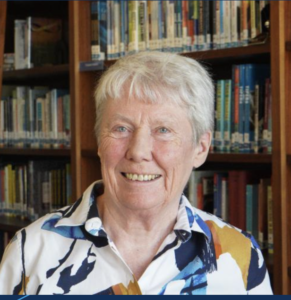NYC Bets New, Uniform High School Math Curriculum Will Boost Student Test Scores
Districts can choose among pre-approved options for middle schools. Mayor, chancellor and supporters say consistency will help teachers and students.

Get stories like these delivered straight to your inbox. Sign up for The 74 Newsletter
New York City Public Schools, in an effort to lift chronically low mathematics test scores and close the opportunity gap for underserved students, will soon require high school math classrooms to use a single, uniform curriculum, Illustrative Mathematics. Districts will choose from a list of pre-approved options for their middle schools.
Mayor Eric Adams and schools Chancellor David C. Banks unveiled the initiative, “NYC Solves,” earlier this week, saying they hoped to build off the success of “NYC Reads.”
Starting in the fall, 93 middle schools and 420 high schools will use the free, open-source Illustrative Mathematics curriculum, which is already being piloted in various locations in the city. Schools in Los Angeles, Philadelphia and Seattle also use the curriculum.
Like many school systems across the country, New York City, the nation’s largest, has long struggled with the subject. Math proficiency increased from 37.9% in 2022 to 49.9% in 2023, but the figure is stubbornly low and is even worse for some student groups: Two-thirds of the city’s Black and Latino children are not performing at grade level in the subject.
“Schools all over the city, even on math, were just kind of doing their own thing — people just creating their own curriculum,” Banks said during a televised press conference. “That’s no way to run a system.”
I’m proud to be following the groundbreaking rollout of ‘NYC Reads’ with ‘NYC Solves,’ reimagining math education and ensuring students and educators have access to high-quality instructional materials and support. pic.twitter.com/t8GTiBl1CV
— Chancellor David C. Banks (@DOEChancellor) June 24, 2024
The chancellor did not blame teachers, administrators or students for their struggle, saying they just needed a better framework. Marielys Divanne, executive director of Educators for Excellence-New York, said her group has been pushing for change for years: More than 1,000 of her 16,000 members signed a petition urging the city to act on the issue.
“Our educators feel that NYC Solves is a much-needed step forward in making progress in addressing our crisis in math instruction,” Divanne said, adding that the previous, school-by-school approach left “thousands of students with low quality instructional materials and uneven support for educators.”
In addition to the mathematics initiative, Adams also announced the creation of the Division of Inclusive and Accessible Learning, which aims to support multilingual learners and students with disabilities. The division will have a $750 million budget — and roughly 1,300 staff members.

Maria Klawe, president of Math for America, a non-profit organization founded 20 years ago to keep outstanding math teachers in the classroom, lauded the city’s choice of Illustrative Mathematics, calling it a very strong curriculum. She had already reviewed some of the materials and praised its approach in taking math from the theoretical to the practical.
“The whole idea is trying to help students understand that a mathematical concept, even if it’s abstract in nature, is actually something that you encounter in your daily life,” she said. “You have a sense that what you’re learning is … something that you can actually use.”
William McCallum, Illustrative Mathematics’s CEO and co-founder, was a lead writer of the Common Core State Standards in math. He said, through a spokesperson, that IM’s work “has evolved far beyond its original focus on illustrating the standards.”
The Common Core had a bumpy roll-out, was maligned by some parents and quickly politicized. The math portion became a cultural punching bag, though it has won favor in academic circles.
McCallum strongly recommends teacher training for those who seek to implement Illustrative Mathematics.
“The curriculum supports a problem-based instructional model that is a shift for many teachers, and they have the most success when they have the support they need to make that shift,” he said. “IM and its partners offer professional learning for those districts that want it.”
Klawe also credited Department of Education officials for making the curriculum the standard for schools. She said it allows teachers to work together across the city to share best practices.
“It’s also very helpful for students who move from one school to another,” she added.
New York City officials say each curriculum has been reviewed and recommended by EdReports, a nationally recognized nonprofit organization. The curriculum also has undergone a formal review by a committee of New York City Public school educators including those with expertise in mathematics, special education and multilingual learners — in addition to district-based mathematics specialists.
Minus charter schools, there were close to 1,600 schools and more than 900,00 students in the NYC school system as of fall 2023. Nearly 73% of students were economically disadvantaged.
Like Klawe, Arlen Benjamin-Gomez, executive director of The Education Trust–New York, favors the uniform curriculum, though she notes it might not be the preference for all.
“Different schools have different feelings about that,” she noted. She added that the approach does, however, relieve teachers from the arduous task of having to develop their own curriculum, allowing them to instead focus on implementation.
But teacher Meredith Klein, who worked for more than a decade at International High School at Union Square before switching to West Brooklyn Community High School, which serves under-credited students, said the new curriculum might not satisfy all kids’ needs.
“I’ve always worked with a really specialized population of students and the curriculum is usually not designed with them in mind,” she said.
Klein has spent the past year implementing Illustrative Mathematics as part of the pilot program and said she struggled to adapt the materials for her students. While the city initially pushed for strict adherence to a pre-set learning schedule, the coach who visited with her to help with the rollout soon recognized the need for adaptation.
“The curriculum is written like a story and you need to teach the full curriculum without any alterations for a full year,” she said, but that’s not the educational experience of so many of the students she’s served. “There wasn’t any guidance about how to break it up … how to retrofit it to our existing system. Not all students are the same.”
Get stories like these delivered straight to your inbox. Sign up for The 74 Newsletter


